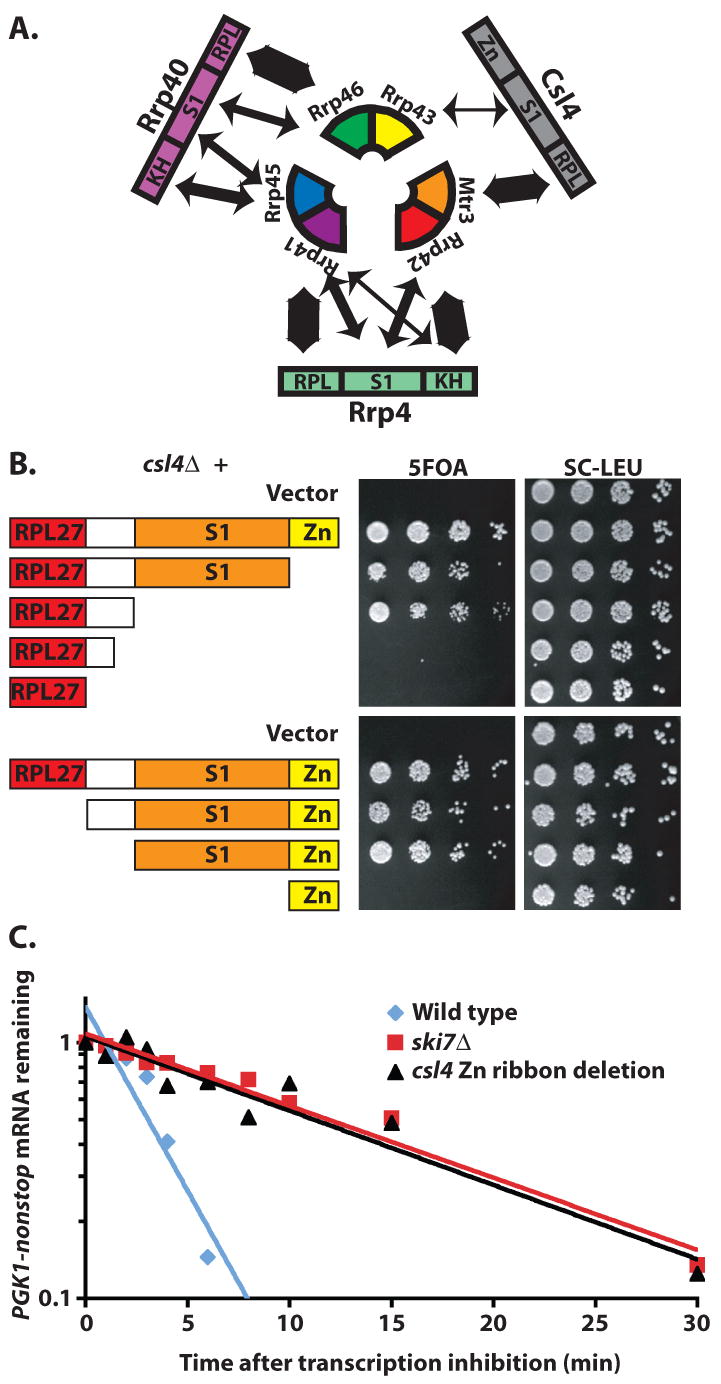Figure 4.

The essential Csl4 does not contain any essential domains, but its zinc-ribbon domain is required for cytoplasmic exosome-mediated mRNA decay. (a) Rrp4 and Rrp40 make extensive contacts with two neighboring subunits of the PH-ring. Csl4 makes extensive contacts with Mtr3p, but relatively small contacts with Rrp43p. The width of the double headed arrows is proportional to the extent of the buried surface calculated using Pymol. (b) The essential Csl4 does not contain any essential domains. Csl4 contains a RPL27-like domain (red), a 38 amino acid linker, not present in other eukaryotes (white), an S1 domain (Orange), and a zinc-ribbon like domain that is missing the zinc-coordinating amino acid residues (yellow). A csl4Δ strain complemented by full length CSL4 on a plasmid with a URA3 marker was transformed with LEU2 plasmids encoding the depicted truncations. Growth on 5FOA indicates that truncated Csl4 can carry out the essential function of the exosome. Similar results were obtained with a GAL∷csl4 strain (Supplemental Fig. 4 online). (c) The zinc-ribbon domain of Csl4 is required for exosome-mediated mRNA decay. The decay rate of PGK1pG-nonstop mRNA was measured in a wild-type strain (half life = 2 minutes), a strain lacking the zinc-ribbon domain of Csl4 (half life = 10 minutes), and a ski7Δ strain (half life = 10 minutes). Shown is the average value from two independent experiments. The conclusion that the zinc-ribbon domain of Csl4 is required for exosome-mediated mRNA decay was confirmed using two other approaches (Supplemental Fig. 7 online).
